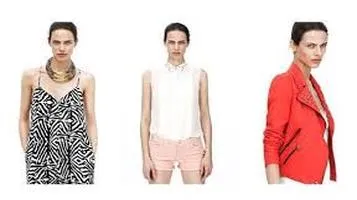The Timeless Elegance of Scarves: A Comprehensive Review
Scarves are versatile accessories that add style and warmth to any wardrobe. Typically made from materials such as wool, cotton, silk, or cashmere, scarves come in various lengths, widths, and textures, offering countless ways to complement an outfit. In colder climates, they serve a practical purpose by providing insulation against the cold, while lighter scarves are popular in warmer weather for their fashionable flair. Scarves are available in a myriad of colors, patterns, and designs, allowing individuals to express their personal style. Beyond fashion, they also hold cultural significance in many societies, often symbolizing identity and tradition. Whether draped, knotted, or wrapped, scarves remain timeless accessories that blend functionality with aesthetic appeal.

Scarves, a versatile accessory that has transcended centuries and cultures, continue to be a staple in wardrobes around the world. From their practical origins to their status as a fashion statement, scarves have evolved in myriad ways, offering functionality, warmth, and a touch of sophistication. This review delves into the enduring charm of scarves, their diverse styles, and their significance in contemporary fashion.
Historical Significance and Evolution
Scarves have a rich history that dates back to ancient times. Evidence suggests that scarves were used by the ancient Egyptians, Romans, and Chinese as a means of protection from the elements and as a status symbol. For instance, during the reign of Emperor Qin Shih Huang in China, scarves were used to denote military rank. In ancient Rome, scarves called "sudarium" were used to wipe sweat, attesting to their practical utility.
Over time, scarves evolved from purely functional items to symbols of style and elegance. In the 19th century, scarves became an essential part of women's fashion in Europe, often made from luxurious fabrics such as silk. Today, scarves are not only a practical accessory but also a reflection of personal style and cultural identity.
Versatility and Functionality
One of the defining features of scarves is their versatility. They can be worn in countless ways, making them suitable for various occasions and seasons. In colder climates, scarves made from wool, cashmere, or alpaca provide much-needed warmth, while lightweight scarves made from silk, cotton, or linen are perfect for milder weather.
Scarves can be draped, wrapped, knotted, or even used as headbands and belts, showcasing their adaptability. This versatility extends to their use in both casual and formal settings. A simple cotton scarf can add a touch of flair to a casual outfit, while an intricately patterned silk scarf can elevate an evening ensemble.
Materials and Craftsmanship
The choice of material significantly influences the look, feel, and function of a scarf. Wool and cashmere scarves are prized for their warmth and softness, making them ideal for winter wear. Cashmere, in particular, is known for its luxurious texture and lightweight warmth, though it often comes with a higher price tag due to its rarity and labor-intensive production process.
Silk scarves, on the other hand, are celebrated for their sheen and elegance. They are often associated with high fashion and can range from simple, solid colors to elaborate designs. Silk’s smooth texture and natural luster make it a favorite for both casual and formal occasions.
Cotton and linen scarves are perfect for warmer weather due to their breathability and lightweight nature. They are also easy to care for, making them a practical choice for everyday wear. Synthetic materials, such as polyester and acrylic, offer affordability and durability, though they may lack the luxurious feel of natural fibers.
Patterns and Designs
Scarves come in an endless array of patterns, colors, and designs, reflecting the cultural diversity and creativity of their makers. Traditional patterns, such as paisley, tartan, and floral motifs, have stood the test of time and remain popular choices. Modern designs often incorporate abstract art, geometric patterns, and digital prints, catering to contemporary tastes.
One of the most iconic scarf designs is the Hermès silk scarf, which debuted in 1937. Known for its intricate designs and impeccable craftsmanship, the Hermès scarf has become a symbol of luxury and sophistication. Other high-end brands, such as Burberry with its classic check pattern, and Missoni with its vibrant zigzag designs, have also made significant contributions to scarf fashion.
Cultural Significance
Scarves hold cultural significance in many parts of the world. In the Middle East, the keffiyeh is a traditional scarf that serves both practical and symbolic purposes. In India, the dupatta is an essential part of traditional attire, often used to convey modesty and grace. In Western cultures, scarves have become a fashion accessory that can convey individuality and style.
The symbolic use of scarves extends to various social and political movements. For example, the suffragettes in the early 20th century used colored scarves to symbolize their cause, and more recently, the pink pussyhat became a symbol of the women’s rights movement.
Contemporary Fashion
In contemporary fashion, scarves continue to be a beloved accessory. Designers experiment with different fabrics, patterns, and styles, ensuring that there is a scarf for every taste and occasion. The rise of sustainable fashion has also influenced scarf production, with many brands opting for eco-friendly materials and ethical manufacturing practices.
Styling a scarf can transform an outfit, adding a pop of color, texture, or pattern. Influencers and fashion enthusiasts often showcase creative ways to wear scarves, from the classic Parisian knot to the boho-chic headscarf. This ongoing innovation ensures that scarves remain relevant and exciting in the ever-evolving world of fashion.
Conclusion
Scarves are more than just a piece of fabric; they are a testament to human creativity, cultural heritage, and the enduring desire for both functionality and beauty. Whether draped over the shoulders for warmth or tied elegantly around the neck as a fashion statement, scarves offer endless possibilities. Their rich history, versatility, and timeless appeal make them an indispensable accessory, cherished by people across the globe. In a world where fashion trends come and go, scarves stand out as a symbol of enduring elegance and adaptability.






